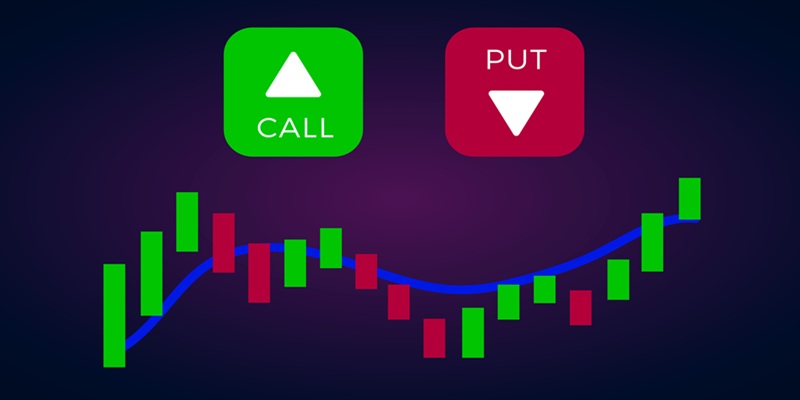Chris Reilly’s note: Today, we’re doing something different I think you’ll find extremely valuable...
As paid-up Disruption Investor members know, one of our best recent trades was to buy “put options” on the S&P 500. We put on this trade as protection against a market decline. When markets struggled in March and April, we took profits after the trade gained 200%+.
A lot of you have written in with questions not just about the trade, but about options in general.
I thought it’d be a great opportunity to bring in our good friend and bestselling author Jared Dillian, who’s been trading options for 26 years... and just released an Options Masterclass.
In our conversation that follows, Jared explains how he uses options and how beginners should think about them.
***
Chris Reilly: Jared, from my perspective, options are the most divisive trading tool in finance. One on side, you have folks who go for 1,000% profits in a day with options. On the other side, many folks assume options are way too complicated and risky. What do you say to both camps?
Jared Dillian: It depends on what your objective is. Sure, there are some people who want to use the leverage and make 1,000% on a trade, but that’s not how I use options. I use them to manage risk. And you can create payoff structures with options that you can’t with just an individual stock.
There are a whole bunch of things you can do with options. For example, even in my trading I would say I use options on probably 60% of my trades by doing simple things like covered calls or buying puts... to call spreads or ratio call spreads… to straddles and strangles.
There’s really an infinite number of ways that you can create a payoff diagram that’s specific to you.
Chris: You said that options trading volume has exploded from about 2 million contracts a day when you were on the trading floor to around 12 million contracts a day today. How has this changed the options market landscape... are there new opportunities or pitfalls that exist today?
Jared: I’ll put it this way: Those 10 million extra contracts probably shouldn’t be traded. When I first started on the Pacific Coast Options Exchange back in 1999, options were pretty much strictly an institutional market. You could trade options as a retail investor, but it wasn’t that common.
And I would say that retail has totally taken over the market, although it kind of lives in very specific places, like tech stocks and the big ETFs and stuff like that.
|
So, depending on where you go in the options market, there might not be much retail activity. But what the retail traders can do is create distortions. You saw this with the degenerate call buying on GameStop (GME) and AMC (AMC), and it made those calls very expensive.
This creates opportunities... You can sell them, and if you can withstand the volatility, then you know you’re going to do great. But the stuff I generally trade doesn’t have a lot of retail participation, so it’s pretty accurately priced.
Chris: You’ve said, “I wouldn’t go into the options market without a shotgun and a flashlight.” Can you elaborate on that?
Jared: You really need to be prepared if you’re going to trade options. Options are highly mathematical. I have a degree in math, and it really helps. If you don’t have a degree in math, then you really need to spend some time learning at least about the underlying mathematical concepts.
You need to have some concept of probability. You need to know the basics of how calculus works. I would say if you’ve never taken a college calculus class, you probably shouldn’t be trading options.
What I try to do with my new Options Masterclass is take those mathematical concepts and express them in a way that even someone without that background can understand, and I think we do a pretty good job.
Chris: You recently shared a story about Alex, the former Chicago Bears player who was running the LMM (lead market maker) post at your market-making firm on the Pacific Options Exchange.
You wrote about how he almost blew up the firm when Yahoo stock moved $100 in a day... Alex “drops to his knees in the middle of the crowd on the trading floor and begins to pray.” Then the stock finally comes down...
What lessons from these trading floor experiences should retail traders understand about options risk? And what’s the biggest mindset difference between the pros and the amateurs?
Jared: The thing about trading options is that you have to have a really big imagination as to what can go wrong. Especially if you’re going to be selling options.
So in the story I told, this guy at our firm was selling a bunch of straddles and strangles on Yahoo before earnings, and this was a guy who had never really traded internet stocks. He was trading the slow, boring, consumer stocks like Colgate-Palmolive (CL) and Procter & Gamble (PG).
And if that’s your background, then it’s kind of hard to really imagine a stock going up 250% in a day after earnings. But if you can imagine it, it will happen.
So in the Options Masterclass, I talk about the risk of selling options. Because when you sell options, you’re exposed to unlimited losses. I think everybody understands that, but I think the trap that most retail investors fall into these days is actually buying too many options.
The reality is most options don’t go “in the money.” They expire worthless. And if you spend all your capital going around buying upside calls, buying downside puts, and waiting for these big moves... what happens is you just bleed to death over time.
Maybe that isn’t as catastrophic as what happened to Alex, but you’ll still lose all your capital. So it’s a balance.
***
Chris here. If you’re interested in trading options the right way but don’t quite know where to start, check out Jared’s Options Masterclass. It’s for everyone, at all experience levels. As a RiskHedge reader, you can get it for 50% off. Review the details here.



